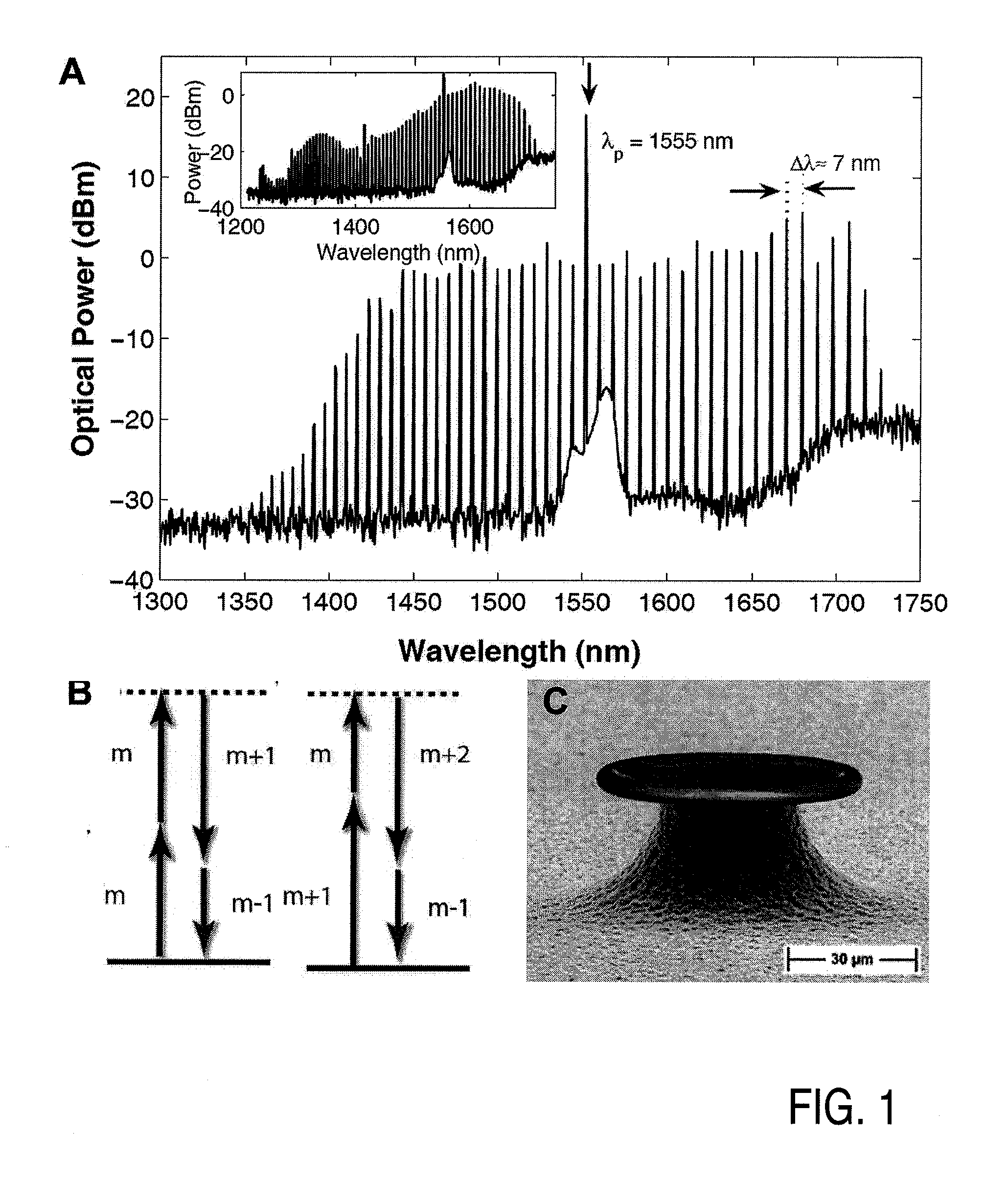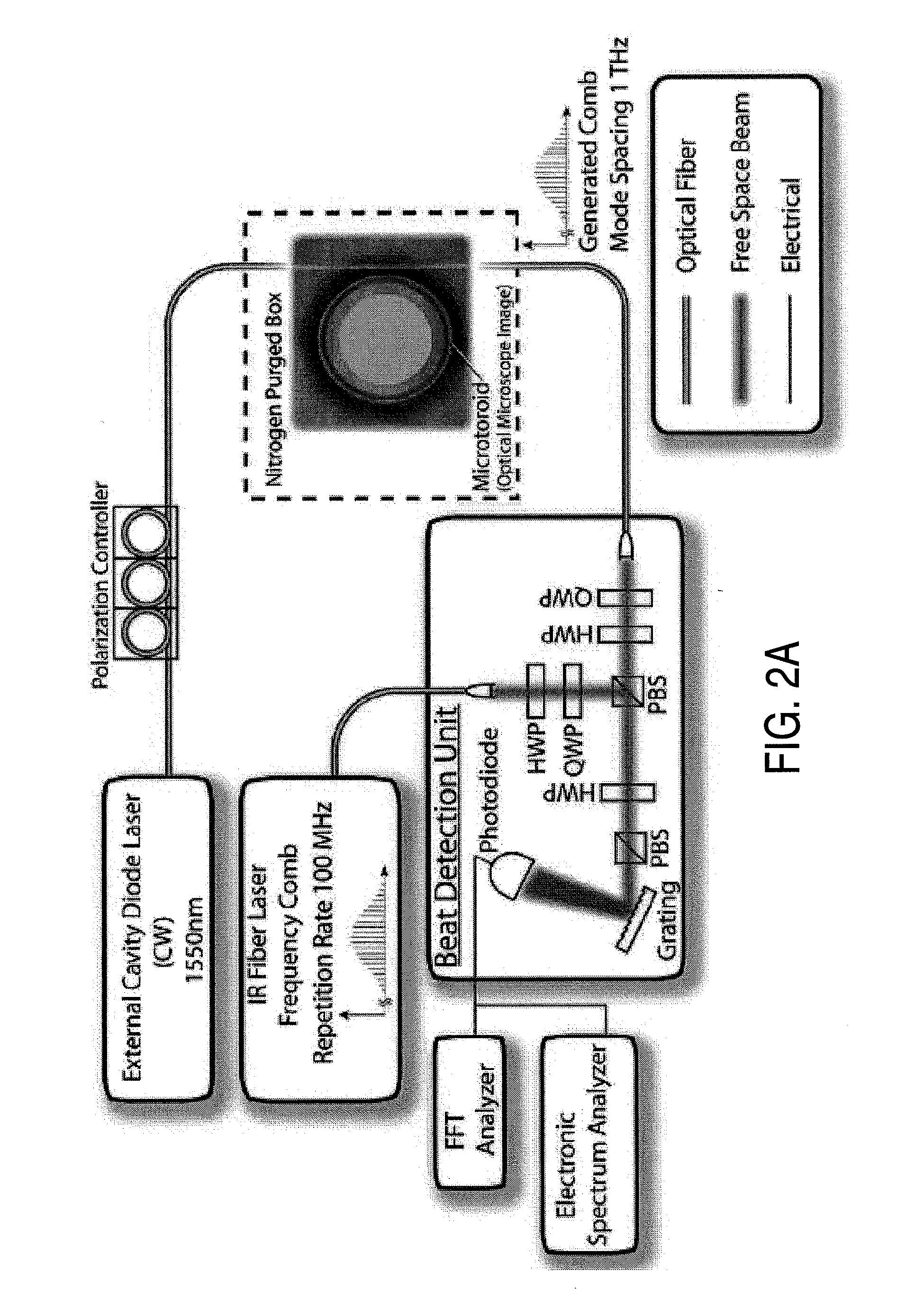Method and apparatus for optical frequency comb generation using a monolithic micro-resonator
a monolithic, optical frequency comb technology, applied in the direction of optics, electromagnetic transmission, instruments, etc., can solve the problems of high cost, complex optical setup, and inability to generate sideband frequencies in the resonator, and achieve the effect of reducing size, cost and power consumption, and high capacity
- Summary
- Abstract
- Description
- Claims
- Application Information
AI Technical Summary
Benefits of technology
Problems solved by technology
Method used
Image
Examples
Embodiment Construction
1. Preferred Embodiments of the Invention and Experiments Illustrating the Invention
[0036]With the following description of preferred embodiments, reference is made to frequency comb generation in micro-resonators of disc or ring shape. It is emphasized that the application of the invention is not restricted to this embodiment, but rather possible with other solid resonators adapted for resonant increasing the optical field inside the cavity above the cascaded parametric oscillation threshold.
[0037]To generate parametric sidebands, a preferred embodiment employs an ultra-high-Q micro-resonator in the form of a silica toroidal microcavity as described in publication14. Toroid microcavities are monolithic resonators made from silica on a silicon chip, which possess giant photon storage times (τ) i.e. ultra-high quality factors (Q=ωτ>108) and small mode volumes (V˜500λ3 / n3). Highly efficient coupling29 is achieved using tapered optical fibers as detailed in prior work22,30. Owing to th...
PUM
 Login to View More
Login to View More Abstract
Description
Claims
Application Information
 Login to View More
Login to View More - R&D
- Intellectual Property
- Life Sciences
- Materials
- Tech Scout
- Unparalleled Data Quality
- Higher Quality Content
- 60% Fewer Hallucinations
Browse by: Latest US Patents, China's latest patents, Technical Efficacy Thesaurus, Application Domain, Technology Topic, Popular Technical Reports.
© 2025 PatSnap. All rights reserved.Legal|Privacy policy|Modern Slavery Act Transparency Statement|Sitemap|About US| Contact US: help@patsnap.com



